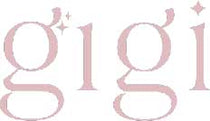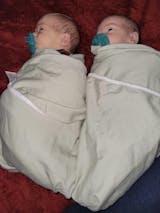How to manage teething in babies
Looking after bub's first teeth
Babies are born with their full set of teeth ready to go, hidden in their gums.
For most babies their teeth will start to appear between 6 and 10 months of age. Some babies will get teeth earlier and some later but generally they will have started teething before they are one.
Teeth can arrive in an order but generally the bottom two teeth are first, followed by the top two and by the time they are 3 they should have all their baby teeth.

How to clean baby's teeth
It is very important to look after your child’s teeth as this is vital for their health and wellbeing. You can even start looking after them before they appear!
You should start by wiping your baby’s gums with a face washer or soft cloth a couple of times a day. This also helps babies get used to having something in their mouth.
As soon as the teeth appear, you can clean them twice a day; in the morning and before bed at night. You can also wrap a clean, damp face washer or gauze around your finger and wipe the front and back of each of your baby’s teeth.
Once your baby is used to having their teeth cleaned, then you can introduce a small, soft children’s toothbrush. Don’t use toothpaste on the toothbrush until your child is about 18 months old. Before that just use water to wash the teeth. Once your child is 18 months old, you can use a small amount of low-fluoride toothpaste on the toothbrush.
You want to make brushing as pleasant as possible for your child, so if you need to, you can use some music or you could do it in front of their favourite TV show if they are really resistant. Also try not to attempt cleaning their teeth when they are really tired and cranky.
Where there is teething, there will inevitably be drool (LOTS of drool). So it's important to find some good quality, highly absorbent teething bibs to soak up all the moisture, shielding baby's clothes so you don't have to constantly change them and protecting their delicate skin from dribble rash.
Here are some tip on how to clean your baby’s teeth:
- Place your baby where you can see their mouth and they feel secure, like in a chair or on your lap.
- Cup your baby’s chin in your hands, with their head resting back against your body.
- Clean the teeth using soft, circular motions.
- Make sure you lift up their lips to brush the front and back of the teeth and at the gum line.
You also should ensure that you keep the toothbrush as clean as possible so after cleaning rinse the toothbrush with tap water. Then store the toothbrush upright in an open container to allow it to air-dry.
How to ease teething pain
Teething can be a painful time for little ones (and parents!). Here are some ways you can manage the tricky teething period, and help to ease your baby’s discomfort:
- Give your baby teethers to chew on — this can help alleviate the pain in their gums. You can buy soft silicone teethers with water inside that stay cool when kept in the fridge, as well as wooden ones that feel nice when baby rubs them on their gums. An Accessory Tether that securely attaches to their bib is a great way to keep their teether close by and off the floor!
- Freeze a few soft face washers and take them out for baby to suck/chew on when their gums are particularly sore.
- Try applying a small amount of teething gel to their gums — ask the Chemist for recommendations. Follow the instructions for the product, and if it’s a gel you can also keep it in the fridge so its nice and cold!
- Teething babies tend to drool a lot! So having a decent supply of super absorbent teething bibs on hand to soak up the dribble to protect baby’s clothes and skin help, and means you won’t have to change their clothes constantly.






